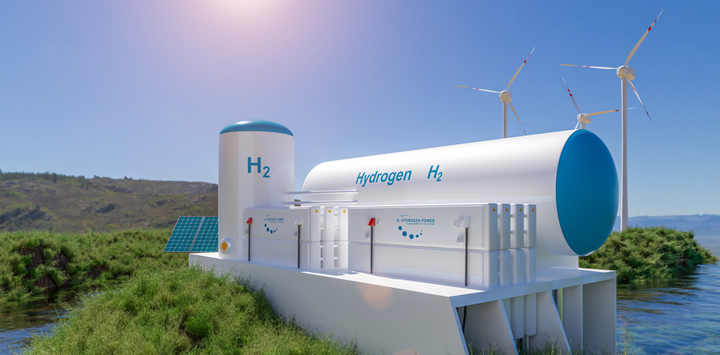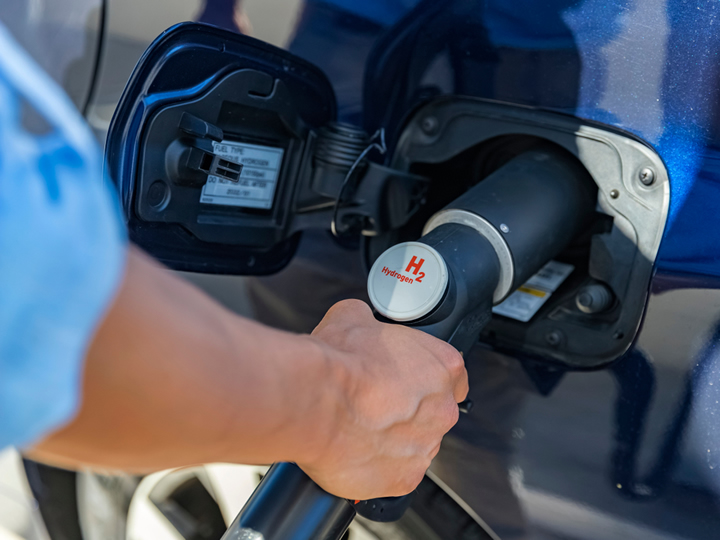What’s holding back hydrogen? Making green hydrogen viable requires a global effort

Despite a constantly growing list of hydrogen-fueled projects across the energy, manufacturing and automotive sectors, the molecule’s potential seems to be lagging. According to the International Energy Agency, despite its green credentials, there’s a distinct lack of financial support from governments and other investors. Here, Mike Torbitt, managing director of resistor manufacturer Cressall, explores the reasons for hydrogen’s stalled rollout and how resistor technologies can lead to greater progress.
Hydrogen has long held a special promise, having been touted as a game-changer across various industries. Renewable hydrogen has the potential to decarbonise energy consumption in line with Net Zero targets, particularly for hard-to-abate sectors to enable a clean and resilient energy system. Yet, despite a surge in hydrogen projects, its full potential remains largely untapped.
Hydrogen’s hurdles
Hydrogen boasts abundant clean energy potential. Its deployment is at a crossroads — there is a growing and gradually maturing pipeline of projects and supportive decarbonisation regulations, but there is also a number of hurdles. There are over 1,400 hydrogen projects underway, which will produce 45 million tons of clean hydrogen a year by 2030, according to the Hydrogen Council’s December 2023 update.
In recent years, the potential of hydrogen in achieving Net Zero has captured the attention of policy makers and industry players around the world. But for it to be clean, it’s important to consider which type of hydrogen is in use. Across global hydrogen production, 900 megatonnes of CO2 are emitted each year — roughly the same quantity of emissions produced by the UK and Indonesia combined according to the Carbon Trust.
To shift the hydrogen industry to purely renewable production methods, it must make it ‘green’ by using electricity generated from renewable sources. Instead of using natural gas or coal to produce hydrogen, electrolysis powered by renewable energy sources is used to split hydrogen out from water molecules. Less than one per cent of current global hydrogen is made in this way, but — to reach net zero — 37.5 per cent of hydrogen must be produced using this method by 2030.
Despite its environmental perks, transitioning to hydrogen demands hefty investments in infrastructure and research and development. But governments and investors have been hesitant, citing concerns over cost-effectiveness and tech readiness. Costs have significantly risen, due to rises in labour and material costs and the increased cost of renewable power.
Making hydrogen green at-scale
It’s clear these hurdles must be overcome to enable a decarbonised energy system. However, further issues arise when you consider how to scale up green hydrogen production to a point where it can meet its potential demand.
Producing green hydrogen requires a widespread renewable grid. Taking advantage of areas that are located further away from the grid — and therefore hydrogen power stations — requires a certain level of planning and a robust method of transmitting renewable energy.
Some green hydrogen power stations are located right next to the renewable source — think SSE Renewables’ Gordonbush Wind Farm, which has submitted a proposal for a co-located hydrogen facility to produce green hydrogen using wind power as its electricity source. But not all hydrogen facilities can be located next to a renewable source. In the meantime, grey hydrogen, which is created using electricity generated from natural gas, will serve as a stopgap to fuel hydrogen’s applications.

Making automotive green
The main application of hydrogen that’s in development is to fuel hydrogen-powered vehicles using fuel cells. In the UK, there’s over £77 million of funding from both the industry and Government to fuel zero-emission vehicles, including projects such as a hydrogen-powered Ford Transit van, fire engines and ambulances.
But to make hydrogen viable for this type of application, other technologies are also necessary. Fuel cells are unable to work under heavy loads for a long time, which presents issues when a vehicle is rapidly accelerating or decelerating. Studies into fuel cell function have shown that, when an FCEV begins accelerating, the fuel cell’s power output increases gradually to a point, but then it begins to oscillate and drop despite velocity remaining consistent. This unreliable power output presents a challenge for automakers.
To mitigate reliability issues, it’s important to install a fuel cell for a higher power requirement than necessary. For example, if a FCEV needs 100 kilowatts (kW) of power, installing a 120-kW fuel cell would ensure there is always at least the required 100 kW of power available, even if the fuel cell’s power output drops. Opting for this solution requires a DBR to remove the excess energy when not required.
Cressall’s solution is the EV2 dynamic braking resistor. It’s the most compact and lightweight solution available to the EV market, offering ten kW of power per cubic decimetre (dm3) and 9.3 kW of power per kilogram. It’s a modular solution, meaning up to five unit can be combined in a single assembly to meet power requirements of up to 125 kW.
Being water cooled, heat can be dissipated safely without the need for extra components, such as fans, as is the case with air-cooled resistors. This means that the EV2 is ten per cent of the volume and 15 per cent of the weight of a conventional DBR, lightening the load of the vehicle itself, meaning it can travel further on the same amount of fuel.
As net zero targets approach, we need to take advantage of the hope that green hydrogen offers. When green hydrogen is widely available, it will power an entirely clean transport system. While there are challenges to overcome, and it’s not a quick-fix solution, hydrogen’s sustainable credentials means it’s a source worth investing in.
Comments (0)
This post does not have any comments. Be the first to leave a comment below.
Featured Product

